Service hotline
+86 0755-83044319
release time:2022-03-08Author source:SlkorBrowse:13011
In recent years, with the rise of applications such as big data, artificial intelligence and the Internet of Things, a new revolution is brewing from the semiconductor industry to the solution provider to the diagnostic market. How to survive this brutal new competition and maintain a leading edge has become the primary issue that every enterprise leader needs to think about, which is especially important in the rapidly changing semiconductor industry
A few days ago, at ASPENCORE's Global CEO Summit with the theme of "Rethinking, Reconstructing, and Resurfacing", CEOs and industry experts from semiconductor companies at home and abroad gave their views on the current technology market of the semiconductor industry and even the geopolitical status quo. perspectives and countermeasures.
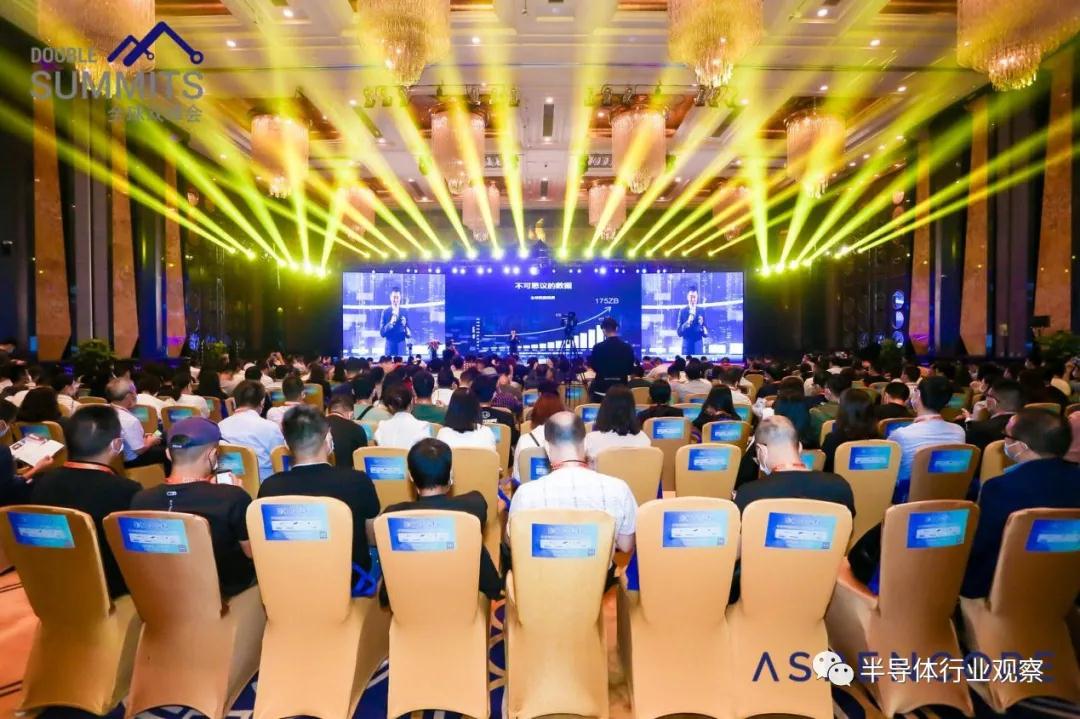
Jerry Fan, President of ADI China: Rethinking, Restructuring and Rebirth of the Industry
At this conference, Jerry Fan, President of ADI China, first shared their views on the rethinking, reconstruction and rebirth of the entire industry during the epidemic reconstruction period. As ADI President and Vincent Roche said, the outbreak of the pandemic at the beginning of this year not only had a significant impact on the local economy and industry, but also brought new changes to the industry. For example, information technology and health care are more closely integrated, and companies and governments are beginning to look for new contactless solutions.
Vincent Roche further pointed out that today, there are three driving forces at play, namely electrification, digitalization and automation. We are experiencing a third wave of transformation in information and communication technology, which is characterized by ubiquitous sensing and connectivity. “We all know that data plays an increasingly important role in our industry, and as value shifts from data delivery to creating data insights, data mining has become a new focus,” Vincent Roche emphasized.
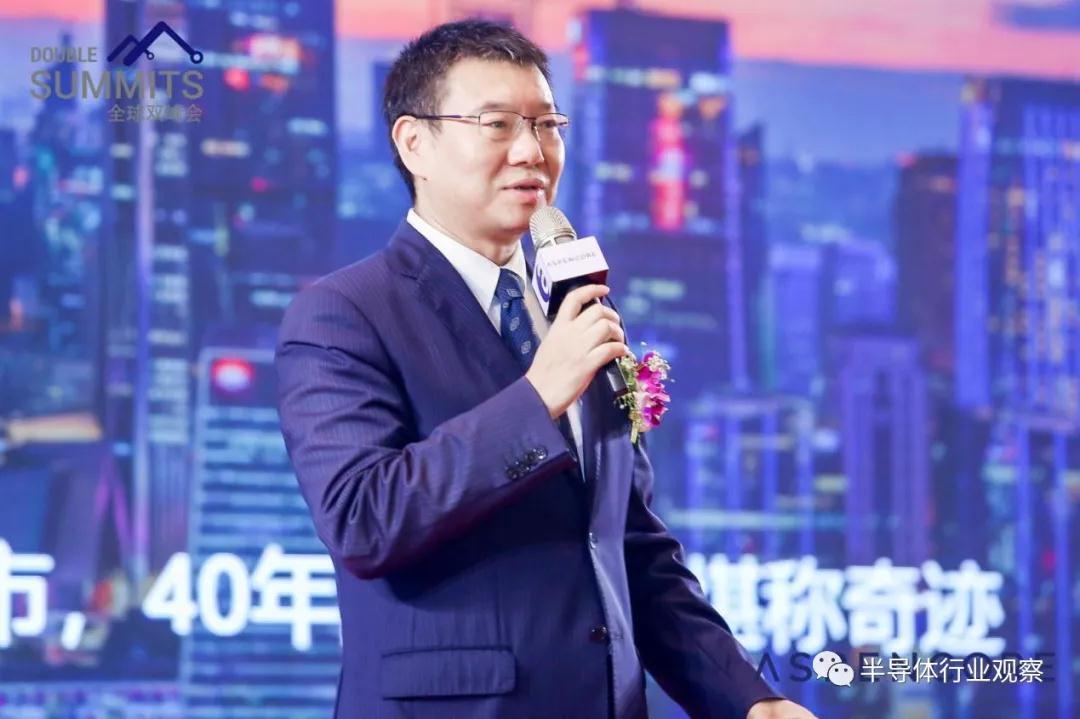
Jerry Fan said that now is the best of times and the worst of times. The bad side is that the industry has encountered many uncertain changes and challenges, which have brought unprecedented shocks. The good thing is that there are many new technological innovations and foundations in the industry now. In his view, the development of artificial intelligence today has a lot of room for imagination. We have a lot of data and new business models; we have the latest network and 5G connections. These provide some opportunities for all of our businesses, that is, how to use technology to create a new digital path for the future, and when it comes to digital, it is impossible to mention data.
As a leading simulation company, ADI is where all data is born. Because ADI is very good at sensing, collecting, and sending data to the cloud behind. "We don't do anything other than the cloud. We do the data sensing, interpretation, sorting, and transmission in the semaphore," said Jerry Fan. "ADI is a bridge from the real world to the digital world." Jerry Fan emphasized. In his view, the industry is facing a shift in four areas:
First, from chip design innovation to system-level development; second, after creating a system-level innovation, you must find a way to have a connection to customer applications and enhance customer value; third aspect , how to achieve upstream and downstream cooperation in the entire industry, and create additional added value to the market and customers; finally, speed is the most critical part, how can we lead the development of the entire product life cycle.
Jerry Fan uses electric vehicles as an example to illustrate how ADI makes changes in these four areas.
He said that ADI has a very advanced chip technology-battery management, and the core problems here lie in two: the first is how to improve the battery measurement accuracy, so that we can have a deep understanding of the battery usage. In view of this, ADI has made a lot of performance adjustments and optimizations in hardware, especially in simulation, which makes its power management products 50% more accurate than all products on the market.
The second challenge for battery management chips is drift. This is mainly because the battery will be affected in various ways as time and environment change during its life cycle. To this end, how to maintain consistent monitoring is what manufacturers need to focus on.
"ADI has innovated in chips and hardware, so that it can minimize drift, so that you can make very accurate measurements of battery packs and batteries throughout the life cycle of the battery without causing large battery damage. Wear and battery life inaccuracy, that's what we call innovation in chip hardware," said Jerry Fan.
The second biggest change made by ADI is how to break through the chip itself to build a system level.
Jerry Fan said that the battery management of electric vehicles faces two major pain points: the first is that the battery pack is very large, which will bring many limitations; the second problem is that because the battery pack needs to be interconnected with many cables, this Increased the weight of the electric car. "For this reason, ADI has made a system-level innovation, made a wireless BMS system, and established some technical standards with the two largest car manufacturers in the world to promote this wireless BMS system to solve the above problems", Jerry Fan added,
From his introduction, we know that this design not only saves a lot of cable weight and cost. At the same time, because there is no need for an integral battery pack, you can spread several small battery packs in different parts of the car to increase the car battery capacity. In addition, such a design and the flexibility of the car structure help car manufacturers to have their own characteristics and breakthroughs in industrial appearance.
"This wireless BMS system can fully meet the automotive quality and functional safety required by automobiles. This completely breaks through the chip itself and is an innovation at the entire system level," said Jerry Fan.
With this wireless BMS system, ADI is able to track battery formation, its storage, battery transportation, vehicle production, on-road operation, maintenance and echelon utilization, providing a complete and full view of its usage and residual value. This solves the industry's long-standing problem of difficulty in evaluating the value of used electric vehicles.
Finally, ADI accelerates the product life cycle in a variety of ways, while also accelerating the speed from product to economic benefit. For example, Jerry Fan said that ADI places the definition rights of all products, product development and the entire production deployment of products locally, and provides a lot of customized services to the local market and local customers. For example, in China, ADI has A lot of localized R&D work has been established so that they can serve local customers better and faster.
EPC CEO Alexander Lidow: GaN redefines power conversion
In the past two years, the third-generation semiconductor materials represented by gallium nitride and silicon carbide have rapidly become popular due to the support of large manufacturers and start-ups. Many developers and consumers have been conquered by its leading performance. However, EPC CEO and co-founder Alexander Lidow said that the performance exhibited by GaN is still in its infancy, and its real advantages have not yet been fully realized.
From his introduction, we know that gallium nitride devices have appeared ten years ago, and the first field of adoption is in industries that have a strong demand for fast switching devices, such as envelope tracking in base stations. And now, gallium nitride is used in many fields such as lidar for fully self-driving cars. These designs initially only support their 3D mapping capabilities, but as the performance of GaN devices improves and people gain confidence in the reliability and availability of these devices, they will be applied to a broad, new market.
“Especially three years ago, when GaN devices were comparable in price to power MOSFET devices. We see the potential for GaN devices to be widely adopted by the market. Especially in DC/DC converters for servers, next-generation robots and wireless In scenarios that have higher requirements for high reliability and low cost, such as motor controllers for human-machine high power density computers, the most high-end audio-like amplifiers, audio amplifiers for on-board applications and wireless power systems, gallium nitride has huge potential. room for growth”, says Alexander Lidow.
Experts in power devices, EPC launched their first commercial gallium nitride integrated circuits six years ago. Unlike most manufacturers, this product from EPC uses a monolithic half-bridge design. Specifically, using the semi-insulating properties of gallium nitride, two power devices are placed on the upper and lower sides of the half-bridge, respectively. This design not only saves space, but also greatly reduces the power loop inductance.
From the introduction of Alexander Lidow, we know that in the follow-up development, EPC integrates the driver and the FET into the same chip, thus creating a very powerful, fast and highly integrated integrated circuit. This is what they call the second stage of gallium nitride.
In the next third stage, EPC integrates low-voltage analog/digital devices and high-voltage power devices on the same chip. That is to say, in addition to low-side power devices, high-side devices can also be integrated, and low-voltage analog/digital devices can be placed on the high-side, and then transistors can be integrated on them to achieve level conversion, so that we can get Monolithic power stage.
Alexander Lidow said that from these upgrades, we can more intuitively see the performance advantages of monolithic integrated circuits:
First, the monolithic half-bridge device reduces the power loop inductance; second, we place the driver next to the FET on the same chip. This eliminates the gate loop inductance; third, we put all the components together and build a heat pipe that balances the temperature of all the devices. Let the net temperature be lower;
In addition, this design not only reduces the number of components in half. It also shortens the time from design to market.
“Over the past 10 years, designers have spent a lot of time with discrete gallium nitride device designs to bring products to market – very compact layouts have to be designed, ICs have to be found to match these devices, Logic signals are converted into gate drive signals. But with monolithic integrated circuits, these problems are solved,” says Alexander Lidow.
He further pointed out that now, the GaN discrete device has developed into the fifth generation technology, and the integrated dam road has also added more and more features. Going forward, discrete devices will be developed into the sixth generation. As for the gallium nitride integrated circuit, the functions including the ring will be integrated into the SoC, so that the user only needs to give the digital logic input signal to obtain the specified power output.
"In the next 3 or 4 years, I think discrete power conversion transistors will slowly be phased out, and designers will use integrated circuits when designing systems," stressed Alexander Lidow.
Although gallium nitride is so popular, he also said that the development of such devices still faces some challenges:
First, gallium nitride does not yet have P-channel devices, which makes circuit design more difficult, especially impossible to make good CMOS circuits;
Second, since GaN technology is still in its infancy, and there are few pre-designed circuit blocks, there is no huge library of circuit blocks on the market. Therefore, in most cases, designers need to build large systems by designing their own circuits. This takes longer and requires technical iterations, and it also places higher demands on the skills of IC designers;
Third, discrete device technology will also continue to advance rapidly – keep in mind that gallium nitride technology is still 300 times away from its theoretical limit. If the IC platform cannot keep pace with the development of the discrete technology platform, the performance advantages that can be obtained from the discrete transistors will not be realized by the integrated circuit for the time being. Therefore, there is a need to develop process design kits extremely quickly to automate the design functions of ICs. Moreover, it is also necessary to achieve technical iterations in order to meet the required technological development speed.
"EPC will, as always, launch a new generation of devices, and take GaN integrated circuits as the company's development direction and make progress together with the industry," Alexander Lidow said at the end.
Arm China CEO Wu Xiongang: Arm will accelerate the next wave of computing innovation
According to Wu Xiongang, executive chairman and CEO of Arm China, the technology industry, which has gone through mainframes, PCs, and then mobile Internet, has now entered the fifth wave of computing. The link pushes computing power from the original cloud to the edge and terminal.
"The biggest change in this wave is the change in our entire network architecture. Computing has covered all devices from end to cloud, which has pushed Arm to a trillion-level ecosystem. The core of this ecosystem is the entire industry. Only through open cooperation and open innovation with upstream and downstream industries can the Arm architecture truly achieve trillion-scale development,” Wu Xiongang added.
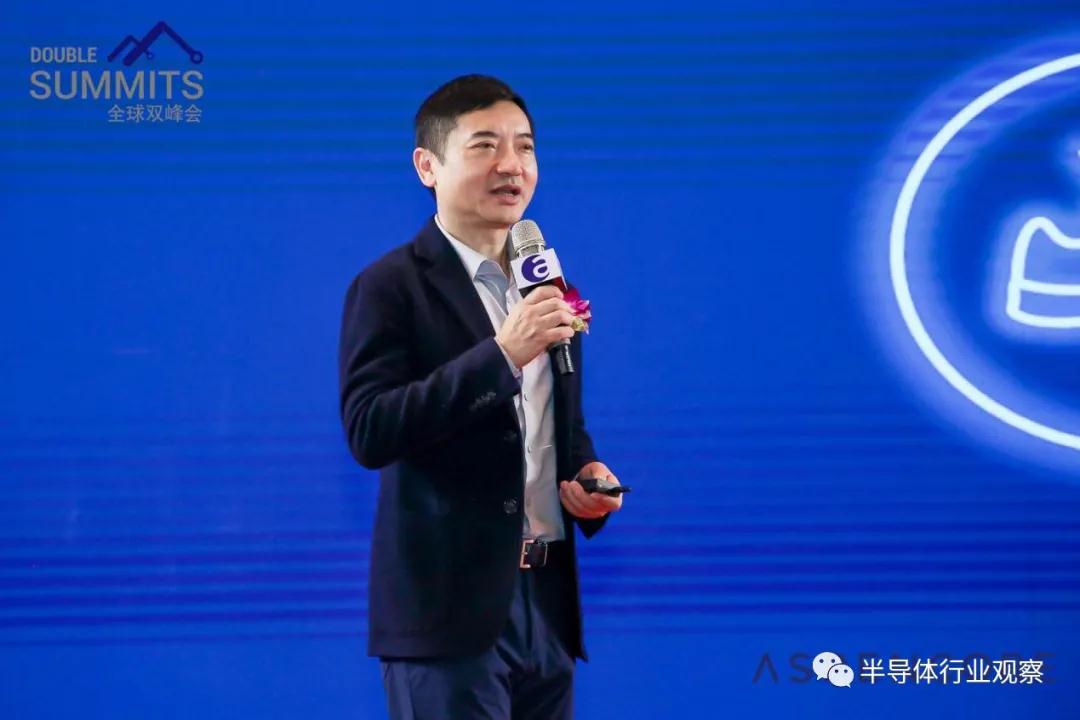
And Arm has always played an important role in the ecology.
For example, at the edge, various computing needs are now emerging. Taking the recently popular TWS as an example, the current TWS chip has far more processor capability than traditional Bluetooth or transmission chips, and its performance is almost equivalent to the main chip of the iPhone 4. This performance improvement also tells us that in the current ubiquitous digital process, data processing has to be pushed to more edge devices as soon as possible. The same requirements are also present in autonomous driving, IoT and V2X related to autonomous driving. In addition to these applications, the network edge has unlimited potential.
"These applications require diverse and low-power computing capabilities at the edge to help process massive amounts of data at the edge. Especially at the edge of the network, because this is a new industry that requires new customized chip services and The computing architecture drives Chuangxin, which brings new challenges to Arm, and also brings more development opportunities,” said Wu Xiongang.
In response to these emerging trends, Arm launched its new Neoverese platform for the cloud-to-edge infrastructure market in 2018. And with the second-generation N series platform Neoverse N2 and the new Neoverse V1 platform, provide power support for the relevant market.
According to reports, the Neoverese N2 platform is a new platform released by Arm earlier this year. On the basis of N1, N2 not only improves computing efficiency (single thread performance is increased by 40%), but also can be made into a multi-core, high-end, high-power cloud processor, and can also be applied to terminals or low This brings better choices to customers in 5G applications, edge computing, and cloud data centers. Application scenarios include cloud, SmartNICs, enterprise networks, and edge devices with limited power consumption. .
As for V1, it is a product launched by Arm for high cloud load. It has higher computing power (single-thread performance is 50% higher than N1), and can be applied to high-performance computing, Markets such as high-performance cloud and machine learning processing.
"Arm provides not only its own performance and power consumption, but also a more important part of the cooperation that the company has established with ecological partners in the past ten years," said Wu Xiongang. He further pointed out that from smartphones to IoT, base stations, and then to the cloud, Arm has cooperated with upstream and downstream partners in chip innovation, software innovation, system innovation, service innovation and other levels, and has achieved the greatest achievements. .
"Such an innovation system will continue to play an important role in the fifth wave of AI IoT and 5G revolutions. Whether it is data generation and processing, data transmission, and ultimately cloud computing and application processing, Arm and its partners will continue to contribute to the industry. Provide the most abundant ecology and the best performance computing platform and technology," Wu Xiongang added.
Especially as China is Arm's most important market, they maintain a high degree of local attention and provide diversified and market-friendly services. Arm China, which was established in Shenzhen, China a few years ago, was born for this reason. Arm China not only provides customers with all of Arm's own product technologies and services, but also has developed a series of chips such as "Zhouyi", "Xingchen" and "Shanhai" in China to provide Chinese customers with more diversified services.
"Arm China hopes to create local innovation and empower the industry based on global standards. In the past ten years, our partners in China have shipped more than 18 billion. We hope that in the next wave of revolution in the future, It can exceed 100 billion yuan, and it can bring more technology, innovation and services to the industry and our ecological partners,” said Wu Xiongang.
In Wu Xiongang's view, the future chip market must be a diversified market segment. Only through an open innovation system, hundreds of thousands of chip companies can build their own chips, and equipment and service manufacturers can provide updated products based on their own. Intellectual property products and services can truly promote the development of our industry.
Arm will continue to play the role of a provider of computing architecture technology and IP technology, empowering the industry and achieving better development in the fifth wave.
Wu Xiaodong, Senior Vice President of OmniVision Group: Current Situation and Future of CMOS Image Sensors
Because of the development of smart phones, CMOS image sensors have been familiar to consumers. But in fact, this is only one of the typical application markets of CMOS image sensors. Wu Xiaodong, senior vice president of OmniVision Group, said at the recent global CEO summit that the current CMOS image sensors are mainly used in mobile phones, automobiles, security, IoT, notebook computers, tablet computers and security and other markets.
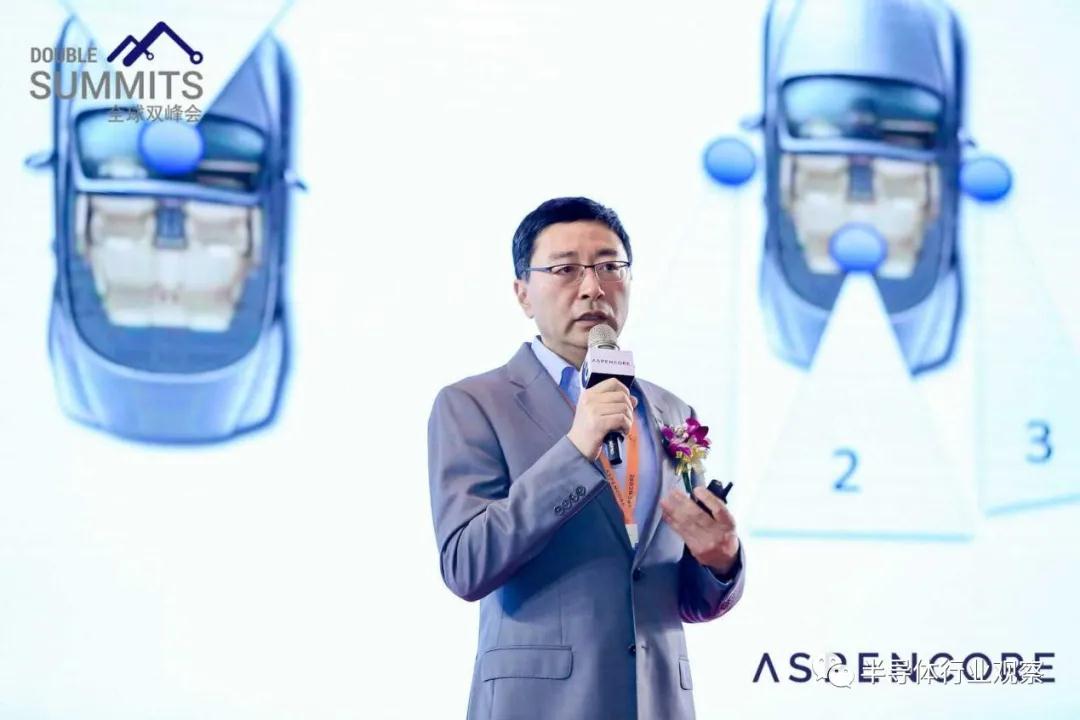
First of all, looking at the mobile phone market, Wu Xiaodong said that due to the development of dual-camera and multi-camera requirements, the demand for CMOS image sensors in this field is not only increasing, but also the performance is getting higher and higher. According to reports, OmniVision's CMOS image sensor pixels in this field have been shrunk to less than 1 micron (0.8 microns last year, 0.7 microns this year), and looking forward to next year, the company plans to shrink it to 0.6 microns, which will bring better Experience, Coway will continue to invest along this technical route;
When it comes to the vehicle, autonomous driving and assisted driving such as 360 panorama and reversing images have also brought the demand for CMOS. OmniVision will reuse the small pixel technology applied in mobile phones to the automotive field. Wu Xiaodong told reporters that OmniVision is the first in the industry to implement an 8-megapixel CMOS image sensor for autonomous driving applications. This product not only has good HDR, but also integrates LFM, anti-LED flicker and other functions, which is an achievement that neither ON Semiconductor nor Sony can achieve
As for security, in addition to our common monitoring, such as home, access control and toys can create new demands. OmniVision will invest in technologies such as net infrared and fill light, so that security equipment has a better experience;
Medical care brings growth momentum to CMOS image sensors through products like endoscopes, and OmniVision is an absolute leader in this field. According to Wu Xiaodong, about 80% of the CMOS image sensors of disposable endoscopes in the world are provided by OmniVision.
There is no doubt that CMOS image sensors have huge growth opportunities. According to research firm IC Insights, sales of CMOS image sensors will increase by 4% to US$16.1 billion in 2020; by 2022, the image sensor market will grow to US$19 billion, a significant increase from the 2018 estimate. nearly 40%. As an important player in the field of CMOS image sensors, OmniVision Group is also ready to meet the market explosion.
From Wu Xiaodong's introduction, we learned that before it was acquired by Weir and became a business unit of the OmniVision Group, "OmniVision" used to refer to a company established in 1995, focusing on the research and development of CMOS image sensors. In the course of several years of development, "OmniVision" has opened up markets in the fields of mobile phones, automobiles and medical care, and after being acquired by Weir Shares in 2019, the new OmniVision Group was born.
"Because we have been working closely with [敏感词] for many years, and also have in-depth cooperation with packaging factories in many places, this ensures that the company's CMOS image sensors have the highest cost performance," Wu Xiaodong pointed out. "Of course, the investment in technology and research and development over the past few years is also the foundation for the company's long-term and sustainable development," Wu Xiaodong added.
Wu Xiaodong said that looking forward to the future, OmniVision Group should not only continue to cultivate on the original basis. Also expand, find new targets, and build a more complete product line for the company. It is precisely because of our company's in-depth and continuous accumulation in many fields that even if there are competitors such as Sony and Samsung in this market, OmniVision is almost the only company that can not only do mobile phones well, but also improve security, automobiles, etc. These things are the top few in the industry.
Cornami President and CEO Walden C. Rhines: Opportunities for Semiconductors
A thousand people have a thousand opinions on where the future opportunities for semiconductors lie. But the answer given by Cornami President and CEO Walden C. Rhines is that the opportunity for semiconductors is about managing and analyzing large amounts of data. He said that applications such as artificial intelligence, the Internet of Things and 5G communications that are widely talked about now have one thing in common, and they are all related to data and its processing. That's why he sees it as the next opportunity for semiconductors.
But he also emphasized that new data-related applications present a challenge to electronic design, which is the need to introduce sensing mechanisms, and possibly analog and digital circuits, to perform some local analysis. This presents challenges for design automation and automating work. It is at this level of complexity and organization that the semiconductor industry can benefit.
Walden C. Rhines further pointed out that because of the increasing amount of data that needs to be processed, this puts forward higher requirements on the computing power of the relevant processors. However, conventional Von Neumann architecture processors have their associated limitations. To this end, on the one hand, system manufacturers are driven to design their own chips to meet specific needs; on the other hand, many entrepreneurs have also begun to explore chips with new architectures. Both of these situations are intensifying within the industry, which in turn presents opportunities for the semiconductor industry.
"The increase in semiconductor content in devices today will provide additional growth drivers for the semiconductor industry," said Walden C. Rhines.
Professor Wei Shaojun: Strategic Consistency under Great Changes
At the summit, Dr. Wei Shaojun, vice chairman of the China Semiconductor Industry Association and a professor at Tsinghua University, also gave a speech entitled "The Right Way of the World is the Vicissitudes of Life". Professor Wei first said that the current Chinese semiconductor industry is a bit too hot, which is a bit outrageous.
"In the current environment of internal and external troubles, this is understandable. But how to ensure our strategic determination, give full play to our huge advantages in China and the existing good foundation, and strive for a major event in the next five to ten years. progress, this will be a major issue," Professor Wei Shaojun continued.
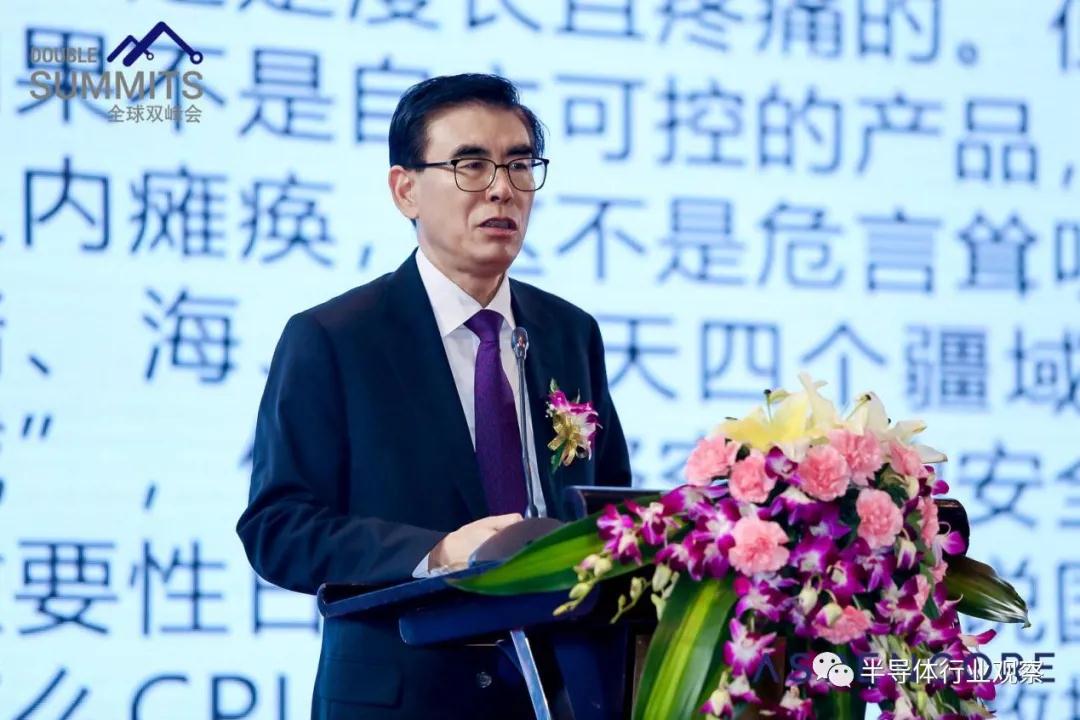
Professor Wei further pointed out that by comparing the development trajectories of global GDP in the past 50 years and China's GDP in the past 30 years, we can find that Internet technology, mobile communication technology, especially the information technology represented by the two gradually moving towards global unification, are promoting played a key role in the global economic prosperity. In the process, China has also grown into the world's largest semiconductor market, consuming about one-third of the world's semiconductors.
But at the same time, China is also facing unprecedented challenges.
From the data provided by Professor Wei, we can see that in the past 15 years, China's design industry has increased by 36 times, the manufacturing industry has increased by 12 times, and the packaging and testing industry has increased by 8.4 times. This growth rate is about 3 to 4 times the average growth rate of global semiconductors in the current period. However, Professor Wei also emphasized that although China's semiconductor fields are growing rapidly, in the field of semiconductor materials, China's growth rate is slow, which is mainly caused by our lack of attention in the past.
"But now, materials have become an urgent concern for China's semiconductor industry, because Japan's embargo on South Korea has given us a wake-up call - that is, if the material problem is not solved, we will encounter great trouble," added Professor Wei. Say.
Although from a fundamental point of view, the growth rate of China's semiconductors is gratifying. But specific to the subdivision, especially in the competitiveness of some high-end chips, the gap between Chinese semiconductors is quite obvious. This is also the reason why Professor Wei Shaojun said that we have relatively strong overall substitution in low-end and mid-end products, but there is still a large gap in high-end products, especially in microprocessors and memory.
"In addition, we have encountered some natural and man-made disasters in the past two years. Natural disasters are the impact of the new crown, and man-made disasters are the inhibition of the industry caused by the tension between China and the United States," said Professor Wei Shaojun. "In this situation, there are both opportunities and difficulties. Especially in a stressful situation, we need a calm mind," Professor Wei emphasized.
In Professor Wei's view, China has already integrated into the global technology system, and it is impossible to go back. For technology to develop, it must go global, and only by going outside can it grow and develop. This is not only what the semiconductor industry needs to do, but other industries must also go international. In other words, internationalization is our general direction, and we must insist on preventing extremism and the wrong idea of closed development.
Professor Wei also believes that even now, the decoupling between China and the US in science and technology is detrimental to others. This is mainly because the decoupling of China and the United States has a great impact on American semiconductors, and the impact on China is self-evident. "The Chinese and American semiconductor industries must compete in order to develop," Professor Wei Shaojun continued.
When talking about specific suggestions, Professor Wei pointed out that in the future, we should focus on products and re-examine the five major sectors of the semiconductor industry: design, manufacturing, packaging and testing, assembly and materials. In the past, we used to be unbalanced in these five sectors, and we were also unbalanced in resource investment. But in the future development, we should pay special attention to the balanced development of these five areas, the key lies in how we grasp it strategically.
Professor Wei Shaojun concluded that the development of China's semiconductor industry should respect the laws of industrial development and overcome the rash development that seeks quick success and instant benefit. At the same time, we must humbly learn from American semiconductors and increase investment. In such a case, it is possible to obtain the best technology and produce the best products through high R&D investment, thereby gaining a larger market share and gross profit space, and then entering into R&D, entering a virtuous circle.
"What if we haven't entered a virtuous circle? Increasing investment in innovation is the key," Professor Wei concluded.
Ruineng CEO Markus Mosen: Embrace the New Era of Third Generation Semiconductors
Ruineng Semiconductor, born out of NXP, is the world's leading power semiconductor device manufacturer, mainly providing power devices such as thyristors and power diodes. Especially in terms of thyristor, according to the data, their thyristor ranks first in the domestic market and second in the world. This is enough to reflect their strength in power devices.
However, from the introduction of the company's CEO Markus Mosen, we learned that since they were spun off from NXP in 2016 and established Ruineng Semiconductor, they have invested in the research and development of related automotive semiconductors, of which SiC is one of their goals.
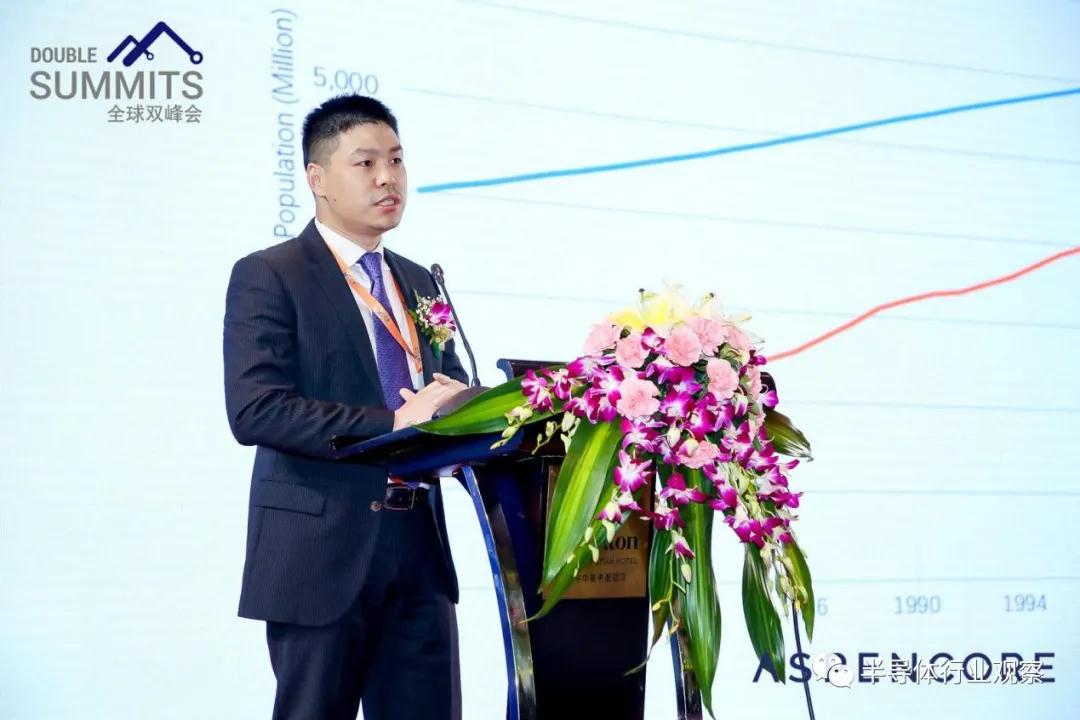
Shen Xin, chief strategy and business operations officer of Ruineng, also pointed out that in the past few decades, the population has grown rapidly, and the global consumption of electricity has also exploded. At the same time, due to the development of the electric vehicle industry, the industry has higher requirements for energy density, which has promoted the development of the third-generation semiconductor industry including SiC. In Shen Xin's view, a new generation of semiconductor materials will bring new opportunities to its Chinese semiconductors.
He said that silicon carbide products have better reliability and better material properties, so it can actually reduce the maintenance cost of offshore wind power to a certain extent. At the same time, it can improve the reliability of the system while reducing the loss of the system, thereby reducing its maintenance cost.
Shen Xin further pointed out at the meeting that because of the gradual decrease in the system cost of SiC devices, more and more manufacturers will choose SiC devices. In addition, the state issued a document to support the development of third-generation semiconductors, which brought unprecedented opportunities to the industry.
Soitec CEO Paul Boudre: FD-SOI empowers the semiconductor industry
Due to the popularity of CPU, GPU and AI chips, the FinFET process has been in the limelight in the past few years, which makes the FD-SOI, which was unveiled at the same time, somewhat eclipsed. But as a wafer provider, Soitec is very optimistic about the opportunities for FD-SOI. This is mainly due to the advantages of the FD-SOI process in PPAC, that is, power consumption, performance, area and cost.
"One of the biggest advantages of FD-SOI is its anti-electromagnetic radiation characteristics. This can improve the reliability of the entire system in applications. In the field of 5G, FD-SOI is even more millimeter wave and microwave is the only choice. In the current process, only FD-SOI can achieve millimeter wave and microwave monolithic system integration," added Zhang Wanpeng, director of strategic development in China at Soitec.
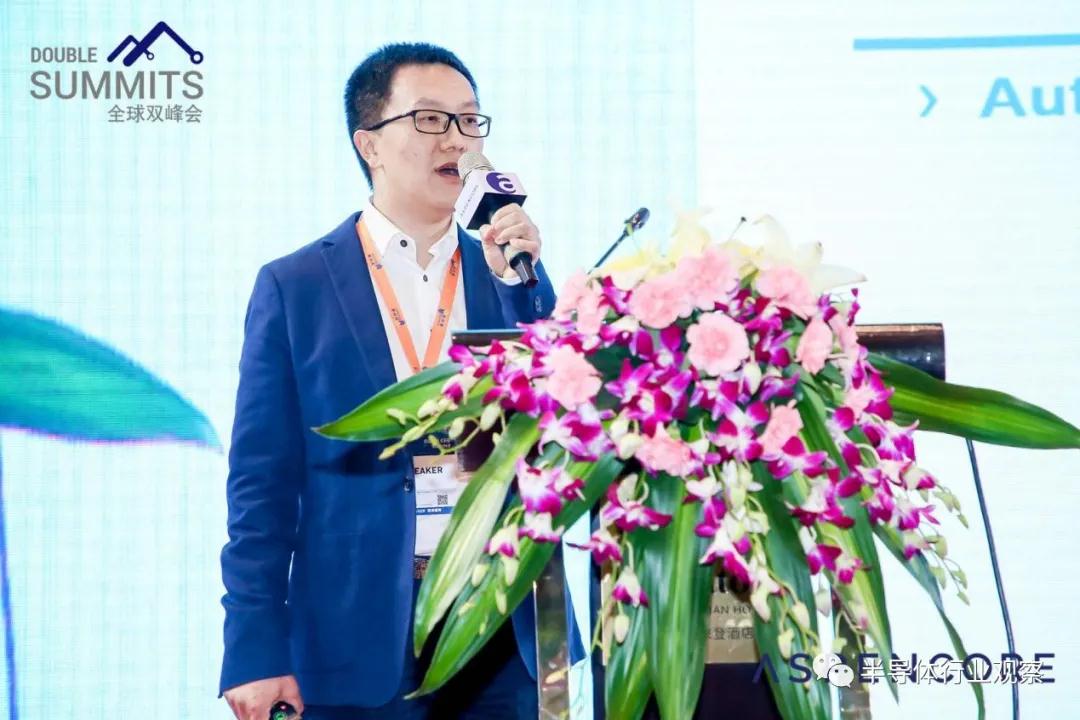
Paul Boudre told reporters that FD-SOI is a mature technology. From the point of view of the process node, it starts from 65nm and goes through 28nm and 22nm. Currently, the company is cooperating with Samsung to develop 18nm products, while cooperating with GF to develop 12nm products.
Such a technology with huge advantages is of great significance to China, which has a huge market. Soitec is also making efforts in this area. "We have the ability to work with partners such as Shanghai Xinao Technology and NSIG to provide FD-SOI platforms in China," said Paul Boudre. "We not only serve our direct customers, we also try to establish a long-term cooperative relationship with our customers' customers and even the entire ecosystem to solve the challenges and problems of the entire industry together," Zhang Wanpeng continued.
In their view, FD-SOI will inevitably play an important role in edge computing, AI, security, camera front-end modules, speech recognition, human-computer interaction systems, virtual reality, and Internet of Vehicles in the future.
ON Semiconductor CEO Keith Jackson: Accelerating Global Technology Innovation
When it comes to ON Semiconductor, the most familiar one should be the on-board CMOS image sensor. Indeed, thanks to its years of accumulation, the company has become a well-deserved leader in the field of automotive CMOS image sensors. This is what SONY, which is in the field of mobile phone image sensors, cannot do. But in fact, after last year's acquisition, ON Semiconductor can provide semiconductor support in many aspects.
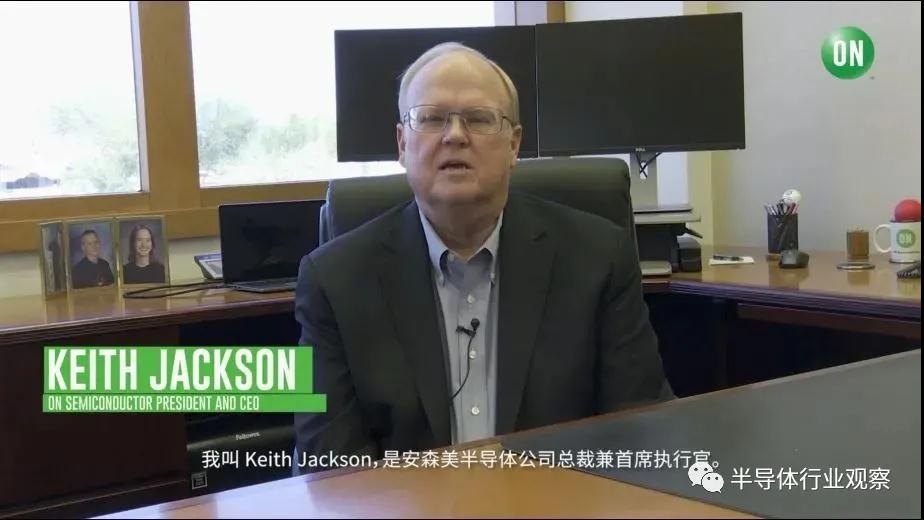
The company's CEO Keith Jackson first said that the development of 5G and WiFi will inevitably bring more data transmission, computing and storage requirements, and in this process, power is required. As a leading supplier in this field, ON Semiconductor can provide complete power conversion systems, providing efficient and reliable solutions for power base stations, radio stations, enterprise servers and large cloud service centers.
"In order to achieve the goal of reducing carbon emissions, ON Semiconductor is also fully committed to it. The solar inverter modules sold by the company generate electricity equivalent to 128 coal-fired power plants, which is enough to reflect the company's contribution in this regard." , Keith Jackson said. In addition, ON Semiconductor provides SiC power solutions for electric vehicles, which help to improve the conversion efficiency of vehicles and achieve energy goals.
"I think 'zero' is a good description of our plans for automotive electronics," Keith Jackson continued. From his introduction, we learned that on the one hand, the 'zero' represents zero defects in automotive semiconductors to ensure the safety of cars on the road; on the other hand, it represents zero emissions and makes the earth cleaner.
Keith Jackson said that ON Semiconductor has been committed to creating safer roads: roads with zero accidents, zero fatalities and zero distractions, and the core of achieving this goal is ADAS and autonomous vehicles, and the key is CMOS image sensors. Last year, ON Semiconductor announced that the company would deliver more than 100 million 1.2-megapixel image sensors for driver assistance applications.
Based on the number of image sensors the company sells each year and the number of accidents that could be avoided, Keith did a simple calculation. He said ON Semiconductor's image sensors could save nine lives per hour, or 81,000 lives per year. "We're proud of that number," Keith said.
Chen Gang, General Manager of BYD Semiconductor: Development Opportunities for Automotive Semiconductors
"The development of semiconductors in these years can be summed up in two sentences, that is - opportunities and challenges coexist, moving forward in oscillation," said Chen Gang. Taking new energy vehicles as an example, as an important carrier of semiconductors, it is necessary to consider not only energy security, but also emissions. To develop this industry, it is necessary to master the core technology, which is why BYD is developing semiconductors.
From Chen Gang's introduction, we know that BYD positions itself as efficient, intelligent and integrated in the car.
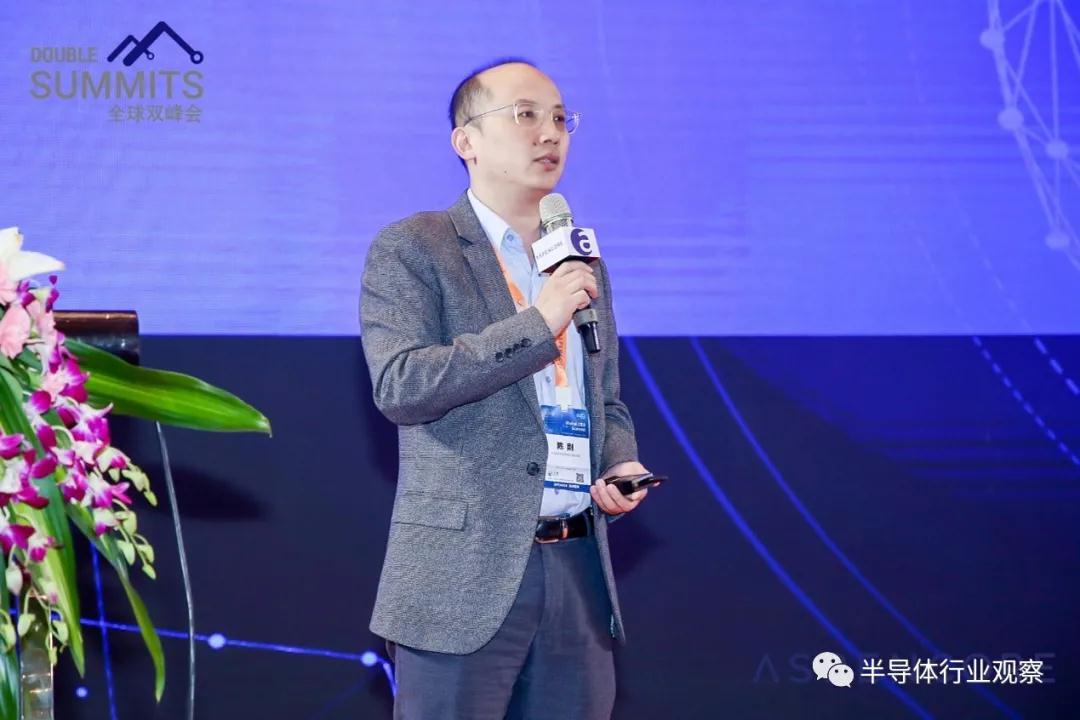
First of all, in terms of IGBT, BYD Semiconductor has been investing for many years, and has been updated for several generations, and it is already shipping stably. In addition, BYD also has extensive investment in SiC, and these devices will play an important role in BYD's cars. Chen Gang told reporters that BYD's installed power devices exceeded 800,000. The "Han" launched by the company this year represents BYD's accumulation in automotive power devices over the past years. Because the front drive of this car uses BYD Semiconductor's IGBT, and the rear drive uses self-developed silicon carbide.
In addition to power semiconductors, BYD Semiconductor has also invested in the research and development of CMOS image sensors and MCUs, both of which have been applied to automobiles. Chen Gang said that BYD Semiconductor will invest in the research and development of various automotive-grade devices. In terms of MCU, the company will upgrade from this year's single-core version to a multi-core version in the future to meet the core needs of automotive intelligent control. "The platform planning of our MCU vehicle is from simple modularization to integration, to future cross-domain integration, and then to carrying cloud computing to turn the car into a very open platform," said Chen Gang.
Among the above three chips that account for more than 60% of the amount and quantity of automotive semiconductors, BYD Semiconductor has achieved good results, mainly due to their advantages in several aspects: First, BYD's automotive ecosystem provides them with a more A good platform; secondly, when BYD Semiconductor is developing, it insists on making three generations of products, that is, the production generation, the reserve generation, and the research and development generation, so that the products can keep up with the needs of the terminal.
Summarize
As many speakers have mentioned, the emergence of the epidemic, the tension between China and the United States, and changes in the end market have forced many developers to re-examine the current semiconductor status and future development direction. How to find a way and determine the direction of development in this "chaotic" era of semiconductors is the biggest challenge facing the current corporate leaders.
And after all this dust has settled, we will see a new world of semiconductors with a new pattern. Whether Chinese semiconductors can take advantage of the trend will surely become a key topic of high concern at home and abroad.









Site Map | 萨科微 | 金航标 | Slkor | Kinghelm
RU | FR | DE | IT | ES | PT | JA | KO | AR | TR | TH | MS | VI | MG | FA | ZH-TW | HR | BG | SD| GD | SN | SM | PS | LB | KY | KU | HAW | CO | AM | UZ | TG | SU | ST | ML | KK | NY | ZU | YO | TE | TA | SO| PA| NE | MN | MI | LA | LO | KM | KN
| JW | IG | HMN | HA | EO | CEB | BS | BN | UR | HT | KA | EU | AZ | HY | YI |MK | IS | BE | CY | GA | SW | SV | AF | FA | TR | TH | MT | HU | GL | ET | NL | DA | CS | FI | EL | HI | NO | PL | RO | CA | TL | IW | LV | ID | LT | SR | SQ | SL | UK
Copyright ©2015-2025 Shenzhen Slkor Micro Semicon Co., Ltd